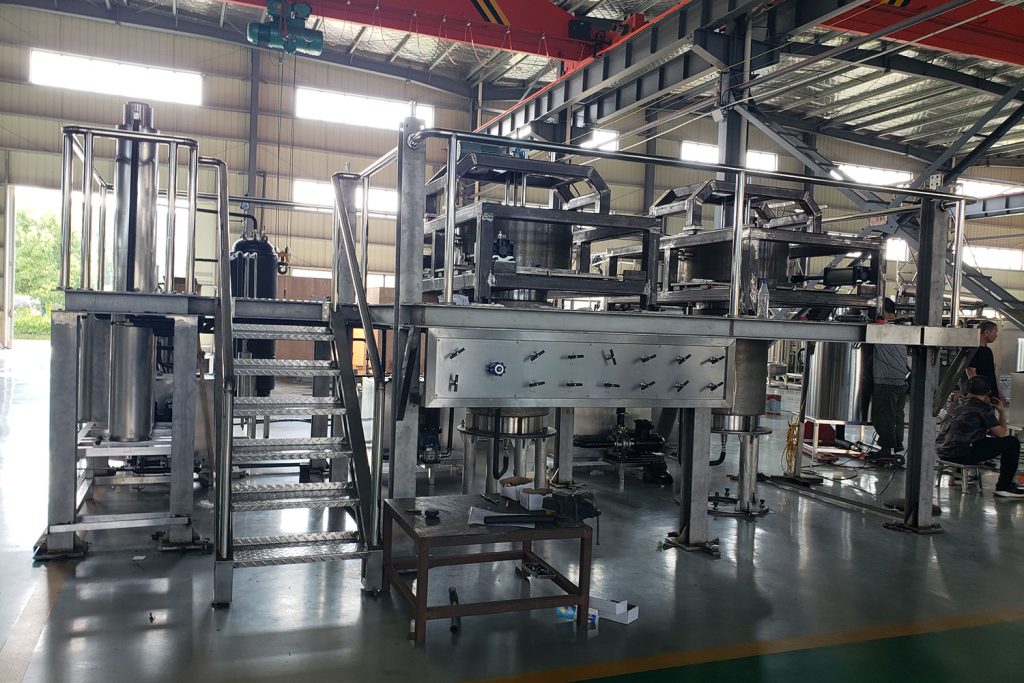Supercritical CO2 fluid extraction is an innovative chemical separation technology that is gaining prominence in both research and development, offering a broad range of applications across industries. This cutting-edge approach leverages the unique properties of supercritical carbon dioxide to extract desired compounds from various substances, making it an eco-friendly and efficient alternative to traditional extraction methods. The success and efficiency of supercritical CO2 fluid extraction heavily rely on precise control systems that govern essential parameters.
Six major control requirements for supercritical carbon dioxide extraction
Supercritical CO2 fluid extraction involves complex processes, demanding meticulous control to achieve the desired results. The following list outlines the specific control requirements for these systems, ensuring that every step of the extraction process is carefully managed:
1. Temperature Control
The temperature of the extraction kettle plays a pivotal role in the success of the extraction process. The extraction kettle temperature typically ranges from 30°C to 100°C. To ensure precision, it’s essential to maintain an error margin of only ±1°C. Automatic control systems must be capable of adjusting the temperature as needed, ensuring that the extraction process is conducted at the optimal temperature for the specific application.
2. Pressure Control
Control over pressure is equally vital in supercritical CO2 fluid extraction. The extraction kettle’s pressure needs to be programmable, with a range between 7MPa to 35MPa. An error margin of ±0.2MPa is permissible. This control system should enable the setting of pressure values and their corresponding duration. The ability to program pressure increases is crucial for optimizing the extraction process for different substances.
3. Flow Rate of CO2
The flow rate of carbon dioxide (CO2) is a critical parameter in supercritical CO2 fluid extraction. The flow rate typically ranges from 1 to 15 liters per minute, with an error margin of ±0.01 liters per minute. Precise control over CO2 flow is essential to ensure that the solvent interacts optimally with the material being extracted, resulting in efficient and thorough extraction.
4. Monitoring Separator Parameters
The separator, a key component in the supercritical CO2 extraction system, must have monitoring capabilities for pressure (below 7MPa) and temperature (15°C to 30°C). These parameters are vital for understanding and controlling the separation process. Automatic monitoring ensures that the separator operates within the required temperature and pressure ranges.
5. Process Parameter Customization
Supercritical CO2 extraction processes can vary significantly depending on the substance being extracted. Therefore, the control system must allow for the setting of process parameters and the ability to select different pressure control curves. This flexibility ensures that the equipment can be optimized for various applications, maximizing its versatility.
6. User-Friendly Interface
For seamless operation and process oversight, the control system should feature a user-friendly interface. It should display the status of the extraction process, offering real-time feedback to the operator. Additionally, the system should provide necessary prompts to guide the operator through each step, ensuring safe and efficient operation.

Advantages of comprehensive control of supercritical CO2 extraction systems
The control requirements outlined above are crucial for the efficient and reliable operation of supercritical CO2 fluid extraction systems. These control features offer numerous advantages that impact both the process and the end results:
- Precision and Consistency : y maintaining strict control over temperature, pressure, and CO2 flow rates, the system can consistently produce high-quality extracts. Precise control ensures that the process is reproducible, reducing batch-to-batch variations.
- Energy Efficiency : Automatic control systems in supercritical CO2 fluid extraction equipment contribute to energy savings of approximately 30%. This efficiency is achieved by optimizing the extraction conditions, reducing the energy required to achieve the desired results.
- Versatility : The ability to customize process parameters and pressure control curves makes the equipment suitable for a wide range of applications. This versatility allows operators to adapt the system to different substances and extraction goals.
- Operator Support : A user-friendly interface with real-time feedback and prompts simplifies the operation of the equipment. This not only reduces the learning curve for operators but also enhances the safety and reliability of the extraction process.
Conclusion
In the realm of supercritical CO2 fluid extraction, precise control is the key to achieving consistent, high-quality results. The control requirements discussed in this article underscore the importance of automatic control systems that enable operators to regulate temperature, pressure, CO2 flow, and other critical parameters.
These systems not only contribute to the stability and reliability of the equipment but also improve energy efficiency and overall performance. As this innovative technology continues to evolve, advanced control solutions will play a pivotal role in unlocking its full potential across a wide range of industries.
